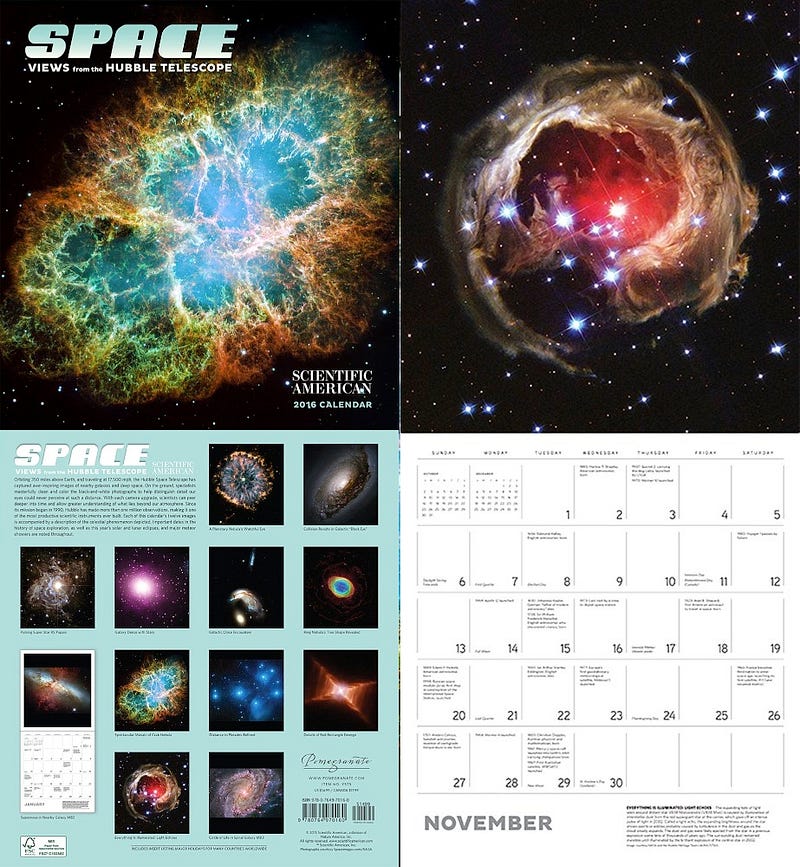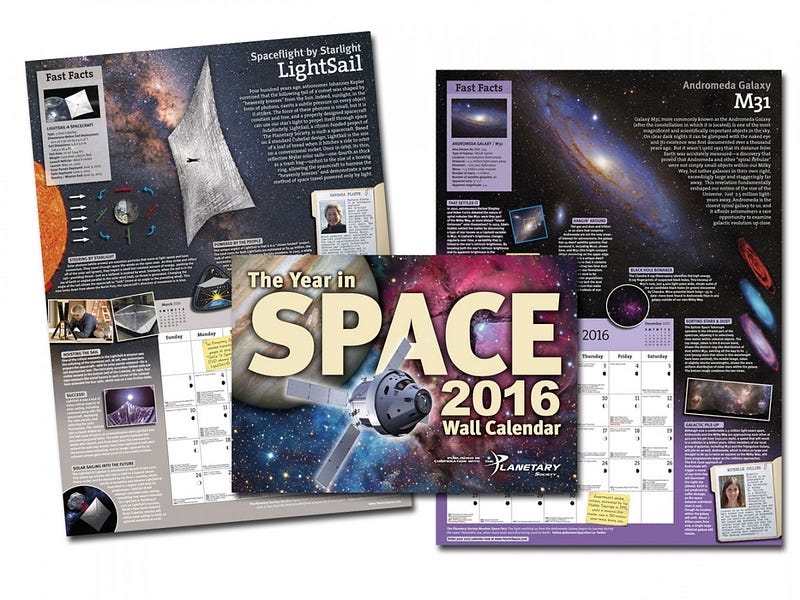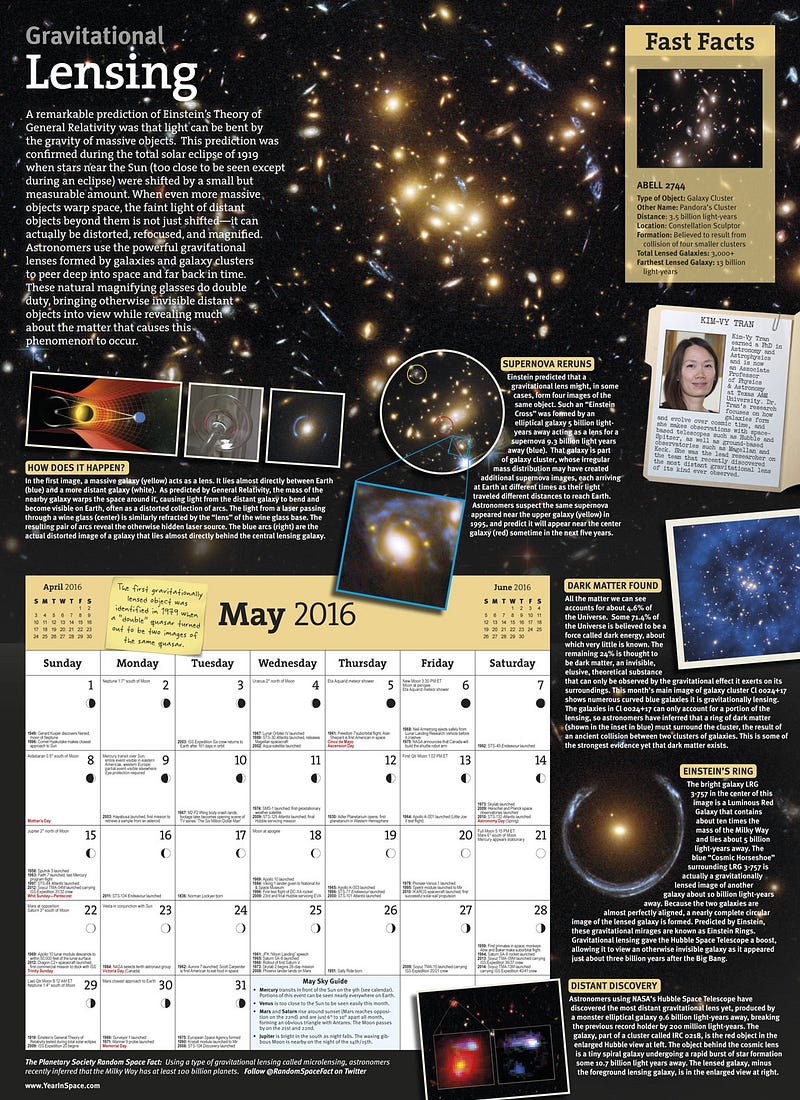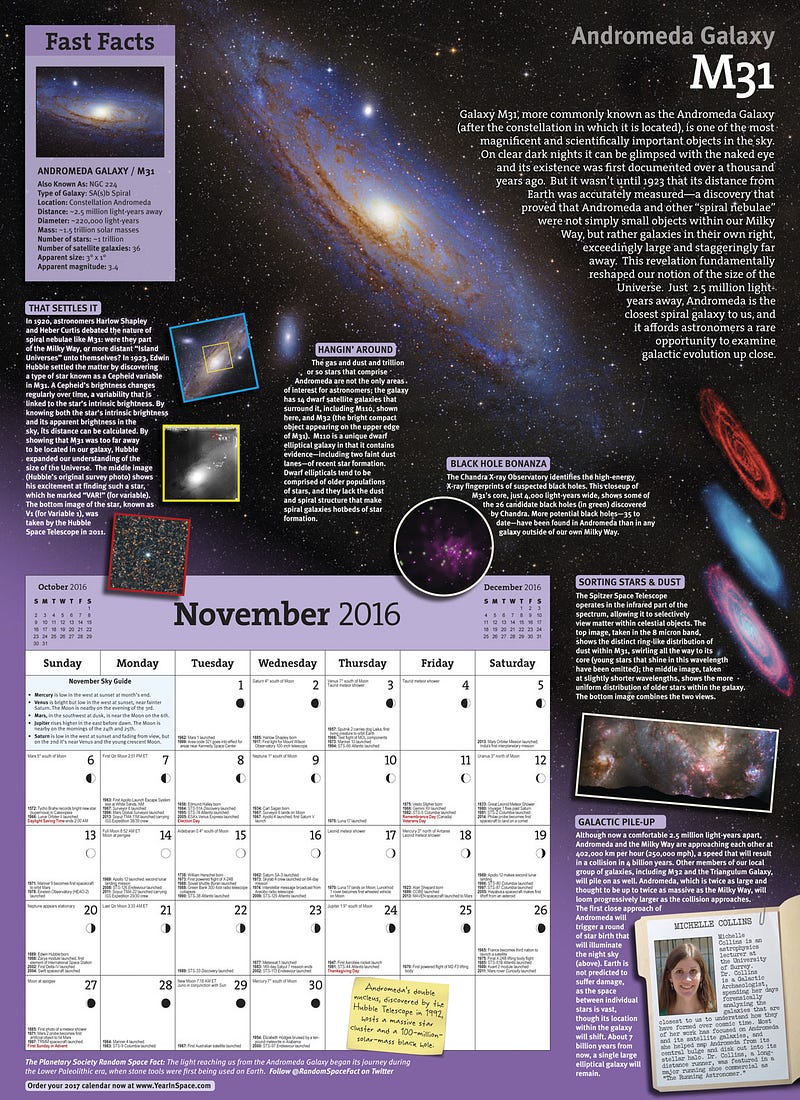Your guide to the best space calendar for 2016

Don’t even think about getting anything other than this one!
“No one regards what is before his feet; we all gaze at the stars.” –Quintus Ennius
If you are (or you know) a space, science, or astronomy enthusiast, there are few things that are more essential to a holiday gift guide than choosing the right wall calendar. When you’re sitting at your desk and need a little inspiration — or maybe just a little break — there’s nothing quite like just glancing away from your screen for a bit and meeting up with a reminder of how wondrous and vast this Universe is.

The best pictures from NASA great observatories, like Hubble in visible light, Spitzer or WISE in the infrared, or Chandra in the X-ray, can take you places you’ll never go with your own eyes. There are a great many wall calendars that offer that, including Scientific American’s Space: Views From The Hubble Space Telescope 2016 Calendar, one of the most popular ones out there.

But there’s so much more to a quality calendar for the year than that, and both sizes of the Scientific American calendar — the large and the small — fail to deliver.
On the other hand, the Planetary Society’s Year In Space 2016 calendar delivers on all the fronts where the Scientific American one falls short.

When I look for a space calendar, there are five separate things I want to see:
- Size: A big, impressive image loses a lot of its impressiveness when it’s scaled down, so I look for a calendar that, when unfolded and hung up, gives me a big, main image to look at. While the Scientific American calendar’s “large” gives about a 12″ by 11″ image, the Year In Space calendar gives a main 22″ by 16″ image, a full 266% as large!
- Events: Sure, both calendars show the phases of the Moon, but the Year In Space calendar shows conjunctions, occultations, eclipses, what planets are visible, a daily Moon phase and both major and minor meteor showers. (The Scientific American calendar has only a fraction of these.) This is guaranteed to keep the astronomy enthusiast looking up.
- History: Practically every day on the calendar marks a historically significant occasion, whether a famous astronomer’s birthday, a NASA launch, an astronomical discovery, or the anniversary of something memorable. The Year In Space calendar has nearly 1,000 of these events, with most days having multiple things to remember; the Scientific American calendar is devoid of them.
- Scientific information: Because you don’t just want to see something beautiful, you want to know about it! Each month highlights a different astronomical or astrophysical phenomenon, like supernovae, comets or star formation, and gives not only the science behind it but also additional images and a glimpse into the active research being done. And finally…
- Surprise bonuses: Additional images, mini-biographies, highlights of missions and discoveries and more can be found on every month of the Year In Space calendar. Every time you look at it, there’s something new to discover, and to remind you that we stand only on the shores of the cosmic ocean, while the great seas of mystery lay all undiscovered before us.

On all these fronts, each and every month, in a big, beautiful format, the Planetary Society’s Year In Space 2016 calendar delivers.

The Planetary Society also offers a weekly Year In Space 2016 desk calendar, which is also excellent, lavishly illustrated and informative, but doesn’t happen to be my style.

The wall calendar is available at Amazon or at the Year In Space site itself, which offers memberships to the Planetary Society, multiple item discounts and the ability to say — under item 7 on the order form — that Starts With A Bang sent you.
This calendar has graced my office wall each year for the past three years, now, and will be making an encore appearance all 2016 long. If you’ve got a space, science or astronomy lover in your life, or if you happen to be one yourself, don’t miss the opportunity to deliver the Universe to them each and every day. You won’t regret it!
And as an added bonus, we’ll be running a giveaway here at Starts With A Bang: every Ask Ethan question or suggestion that’s accepted and results in a column from now until the end of the year will result in you, the lucky chosen one, receiving a free Year In Space calendar courtesy of The Planetary Society and Starts With A Bang! What are you waiting for; send yours in today!
Leave your comments on our forum, support Starts With A Bang! on Patreon, and use WS15XMAS30 to pre-order our book, Beyond The Galaxy, at 30% off!





